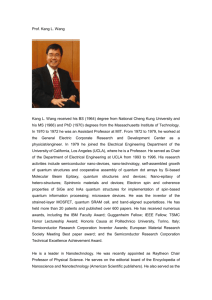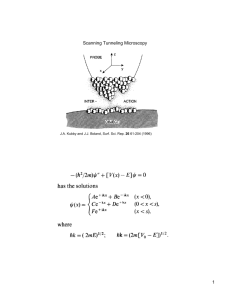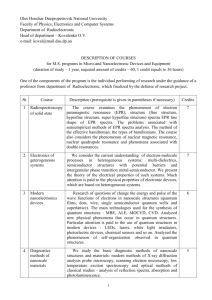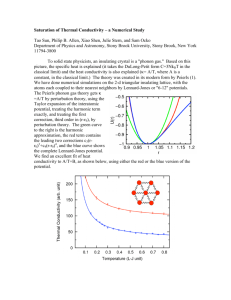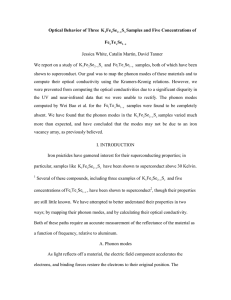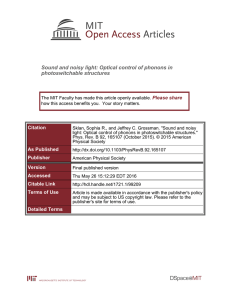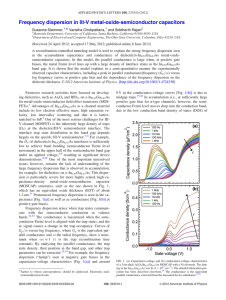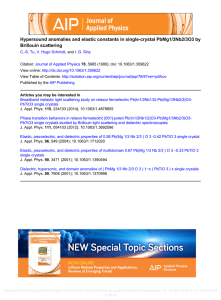Progress 8/31/04 Crystal structure: definition of lattice and examples
advertisement
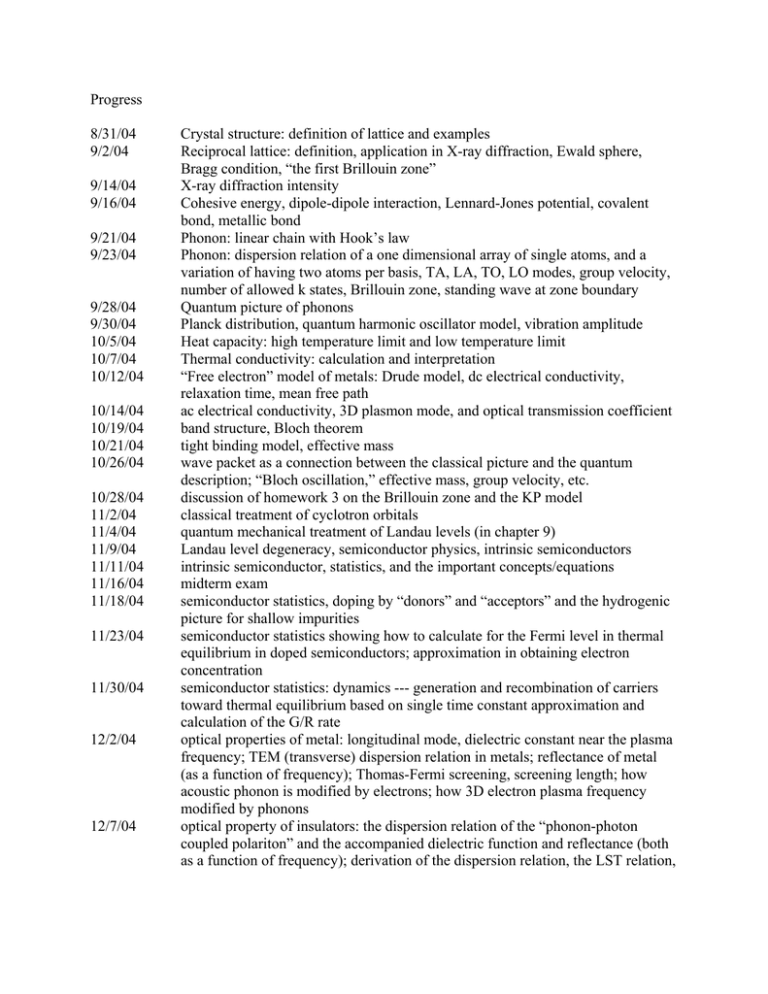
Progress 8/31/04 9/2/04 9/14/04 9/16/04 9/21/04 9/23/04 9/28/04 9/30/04 10/5/04 10/7/04 10/12/04 10/14/04 10/19/04 10/21/04 10/26/04 10/28/04 11/2/04 11/4/04 11/9/04 11/11/04 11/16/04 11/18/04 11/23/04 11/30/04 12/2/04 12/7/04 Crystal structure: definition of lattice and examples Reciprocal lattice: definition, application in X-ray diffraction, Ewald sphere, Bragg condition, “the first Brillouin zone” X-ray diffraction intensity Cohesive energy, dipole-dipole interaction, Lennard-Jones potential, covalent bond, metallic bond Phonon: linear chain with Hook’s law Phonon: dispersion relation of a one dimensional array of single atoms, and a variation of having two atoms per basis, TA, LA, TO, LO modes, group velocity, number of allowed k states, Brillouin zone, standing wave at zone boundary Quantum picture of phonons Planck distribution, quantum harmonic oscillator model, vibration amplitude Heat capacity: high temperature limit and low temperature limit Thermal conductivity: calculation and interpretation “Free electron” model of metals: Drude model, dc electrical conductivity, relaxation time, mean free path ac electrical conductivity, 3D plasmon mode, and optical transmission coefficient band structure, Bloch theorem tight binding model, effective mass wave packet as a connection between the classical picture and the quantum description; “Bloch oscillation,” effective mass, group velocity, etc. discussion of homework 3 on the Brillouin zone and the KP model classical treatment of cyclotron orbitals quantum mechanical treatment of Landau levels (in chapter 9) Landau level degeneracy, semiconductor physics, intrinsic semiconductors intrinsic semiconductor, statistics, and the important concepts/equations midterm exam semiconductor statistics, doping by “donors” and “acceptors” and the hydrogenic picture for shallow impurities semiconductor statistics showing how to calculate for the Fermi level in thermal equilibrium in doped semiconductors; approximation in obtaining electron concentration semiconductor statistics: dynamics --- generation and recombination of carriers toward thermal equilibrium based on single time constant approximation and calculation of the G/R rate optical properties of metal: longitudinal mode, dielectric constant near the plasma frequency; TEM (transverse) dispersion relation in metals; reflectance of metal (as a function of frequency); Thomas-Fermi screening, screening length; how acoustic phonon is modified by electrons; how 3D electron plasma frequency modified by phonons optical property of insulators: the dispersion relation of the “phonon-photon coupled polariton” and the accompanied dielectric function and reflectance (both as a function of frequency); derivation of the dispersion relation, the LST relation, 12/9/04 the Clausius –Mossotti relation, the three contributions to the polarizability in a solid exciton (dispersion relation), photoluminescence intensity explained by first the “joint density of states” and the then time-dependent electron-hole recombination rate, the derivation of Kramers-Kronig relations, its physical meaning and application in the analysis of reflectance spectrum
